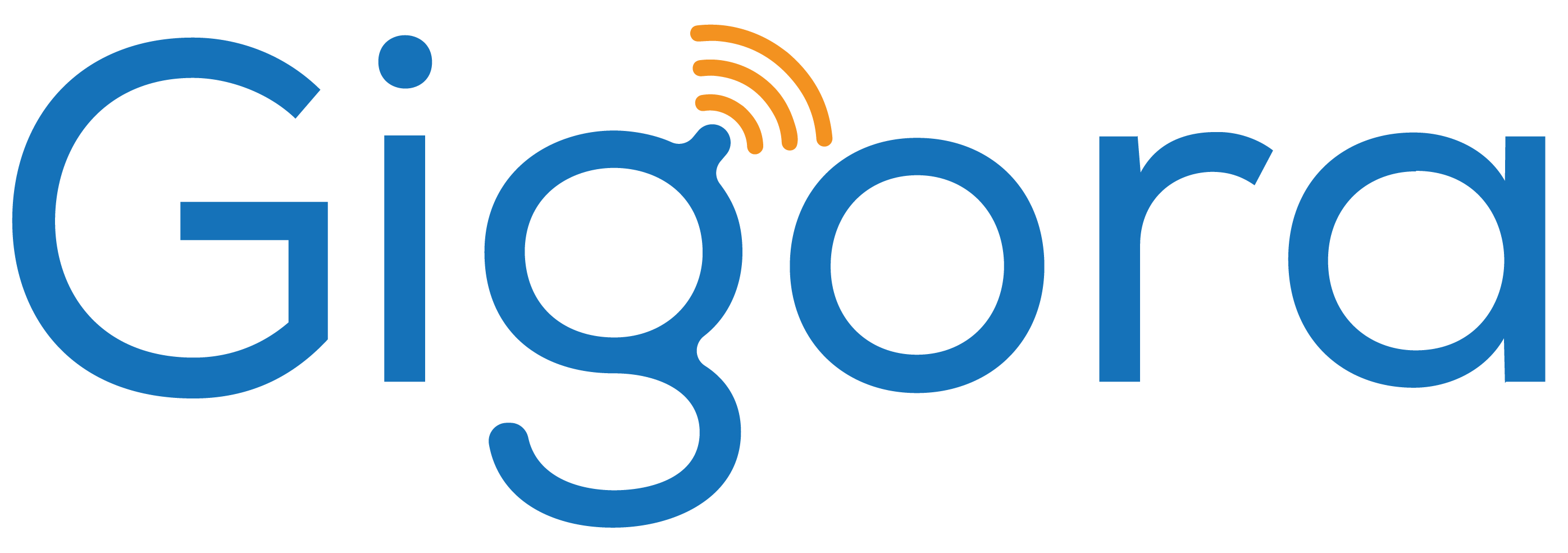[ad_1]
Now that you understand the benefits of conducting market research for SMBs, let’s discuss the different types of market research.
You may have only heard of primary and secondary research, but several different types exist.
There are 13 different market research methods that we are going to review, but bear in mind that you don’t need to – and cannot – use them all.
Some people hire a market research firm to help with the process, but I’m here to tell you that you can do your own market research.
So, let’s review each of them.
1. Primary Market Research
Primary market research is the most commonly used type of market research, and typically primary research provides you with the best data (straight from your customers).
What is Primary Research?
Primary research is data obtained firsthand. AKA, you collect the data yourself OR commission your team to collect the data.
You own and control the data you get from this research because you gathered it yourself.
How to Do Primary Research
To conduct primary research, you must know your target customers and the information you want to gather.
Usually, this includes demographics such as age, location, gender, and income level.
The most common methods for gathering data are surveys, interviews, focus groups, and observations.
- Step 1: Find a pocket where your target audience is (Reditt, Dog Parks, Target)
- Step 2: Create research objectives
- Step 3: Choose research questions
- Step 4: Choose a research method, and go collect the data!
Primary Research Examples
Some examples of primary research include:
- Surveys: gathering feedback from your customers about their experiences with your products and services
- Interviews: talking one-on-one with customers to better understand their needs
- Focus Groups: gathering a group of customers together to discuss their experiences and opinions about your products and services
- Observational Research: observing your customers in their natural environment to better understand how they interact with your products and services
You might use one type of primary research or a combination, depending on your goals.
2. Secondary Market Research
Secondary market research can be a great way to get an overview of the market without taking the time to conduct your own research.
What is Secondary Research?
Secondary research gathers data from existing sources, such as public records, reports, and surveys.
Someone else has already gathered this data, so you don’t need to pay for it or do the work yourself.
How to Do Secondary Research
To be able to use secondary market research, you first need to identify the available data sources.
For example, public records, industry reports, surveys, and news articles are great secondary data sources, and of course, the easiest one is Google.
- Step 1: Determine the research topic and define it
- Step 2: Look for existing data sources and research
- Step 3: Start the process of searching and gathering the data that already exists.
- Step 4: Compare the collected data and results
- Step 5: Analyze the data and explore further
Secondary Research Examples
Some examples of secondary research include:
- Industry Reports: gathering data from reports published by industry organizations and third-party sources
- Government Data: collecting demographic data from government sources
- Social Media Analysis: analyzing customer conversations on social media to better understand sentiment about products and services
- Competitor Analysis: researching your competitors’ products, pricing, and marketing strategies
You can gather the necessary information once you have identified the data sources.
It’s important to remember that while secondary research is a great way to get an overview of the market, it doesn’t always provide the same level of detail as primary research.
3. Qualitative Research
Qualitative market research focuses on understanding the why behind consumer behavior.
It can provide invaluable insights into how your customers think and feel about your products or services.
What is Qualitative Research?
Qualitative research is a type of market research that focuses on gathering subjective information (meaning it cannot be measured) from customers.
It involves techniques such as one-on-one interviews, a focus group, and observation to gain insights into customer behavior.
How to Do Qualitative Research
To conduct qualitative market research, you need to identify the questions you want to answer and select a method to gather the data.
For example, an in-depth interview would be more appropriate than a survey if you want to know why customers choose your competitor’s products over yours.
- Step 1: Determine the research topic and define it
- Step 2: Select the appropriate qualitative method to conduct your research
- Step 3: Collect data
- Step 4: Analyze and interpret the data
- Step 5: Make meaningful conclusions from your research
Qualitative Research Examples
Some examples of qualitative market research include:
- Interviews
- Focus Groups
- Observational Research
While quantitative research can provide you with hard data, qualitative research gives you insights into why customers behave the way they do, let’s take a look at that next.
4. Quantitative Research
Quantitative market research focuses on gathering information that can be measured.
What is Quantitative Research?
Quantitative research is a type of market research that focuses on gathering objective data (data that can be quantified or measured) from customers.
This data can then be used to answer questions about customer behaviors and preferences.
How to Do Quantitative Research
There are several ways to conduct quantitative market research. To get started, you need to determine the data you need and then select a method.
For example, if you want to understand customer preferences for color options on a product, you might use an online survey.
- Step 1: Define your research topic
- Step 2: Choose the appropriate quantitative method
- Step 3: Collect data
- Step 4: Analyze and interpret the data
- Step 5: Draw meaningful conclusions from your research
Quantitative Research Examples
Some examples of quantitative market research include:
- Surveys: gathering feedback from customers about their experiences with your products and services
- Polls: collecting quick data from customers to gain insights into customer behavior
- A/B Testing: testing different versions of your product or website to see which one performs better.
- Experiments: running experiments to test hypotheses and gain insight into customer behavior
Quantitative research is a great way to get an objective view of your customers and understand how they interact with your products and services.
5. Brand Research
Have you ever felt yourself wondering what people think of your brand? Well, brand research is the way to get the answer.
What is Brand Research?
Brand research is gathering customer data to understand how they perceive your company’s brand.
This data can provide you with the following:
- Understanding your customer’s perception of your brand and how it compares to your competitors.
- Identify opportunities for improvement
- Help you measure success over time
It is essential to ensure that your products and services meet your target market needs.
How to Do Brand Research
To conduct this type of market research, you need to first identify the questions you want to answer.
Once you have identified the questions, you need to decide on the type of research (qualitative or quantitative) that can best answer those questions.
- Step 1: Define your brand research goals
- Step 2: Develop your brand research plan & questions
- Step 3: Find your target audience (where are they)
- Step 4: Collect relevant data through surveys, questionnaires, etc.
- Step 5: Analyze the data and (potentially) pivot your brand
Brand Research Examples
Some examples of brand research include similar examples to primary research, such as interviews, surveys, focus groups, and observational research.
Others include the following:
- Brand tracking surveys: asking customers the same questions over time to measure success
- Social media analysis: analyzing customer conversations on social media to get an understanding of their feelings toward your brand
- Sentiment analysis: using automated tools to measure customer sentiment about your brand.
- Customer panels: recruiting a panel of customers to provide ongoing feedback on new products or services.
6. Customer Research
Customer research is an essential part of any company’s marketing mix. It can provide valuable insights into who your customers are and what they need.
What is Customer Research?
Customer research is gathering customer data to gain insights into their behaviors, needs, and preferences.
This type of market research can help you better understand your target audience and develop products or services that meet their needs.
How to Do Customer Research
To conduct customer research, you need to first identify the questions you want to answer.
- Step 1: Clearly define the topic and goals of your research
- Step 2: Develop a plan and determine whether you will use qualitative or quantitative research methods
- Step 3: Identify your target audience
- Step 4: Collect data through methods such as surveys or interviews
- Step 5: Analyze the gathered data
Quantitative Research Examples
If you want to gain an understanding of customer behaviors, use the following:
If you want to understand customer preferences, use the following
If you want to understand customer opinions, use the following:
- Sentiment Analysis
- Social Media Analysis
7. Product Research & Testing
Product research and testing is a great way to ensure your products meet customer needs.
What is Product Research?
Product research is gathering customer data to gain insights into their behaviors, needs, and preferences when it comes to a product.
This data can then be used to develop or enhance products that meet customer needs.
How to Do Product Research
To conduct product research, you need to first identify the questions you want to answer about your product.
- Step 1: Clearly define your research goals
- Step 2: Determine the wants and needs of your customers
- Step 3: Analyze your competitors and comparable products
- Step 4: Study the market to identify opportunities and trends
- Step 5: Conduct your research
- Step 6: See feedback from potential customers
- Step 7: Develop and test your minimum viable product (MVP)
- Step 8: Analyze the data
- Step 9: Use your findings to guide your product strategy
Product Research Examples
The most common methods for product research are interviews, surveys, focus groups, and A/B testing.
Other examples include:
- Usability Testing: testing your product with customers to see how easy it is to use (we’ll talk more about this later)
- Beta Testing: testing the functionality of a product before it is released
- Analytics: analyzing the usage of a product to understand how customers are using it and uncover any potential issues
8. Competitor Research
Understanding your competition is an essential part of any company’s marketing strategy.
Competitor research can provide valuable insights into what your competitors are doing and how you can differentiate your products or services.
What is Competitor Research?
Competitor research is gathering data about competing companies to gain insights into their strategies.
This data can provide you with the following:
- Understanding your competitor’s products or services
- Gaining insight into customer preferences and behaviors
- Identifying potential opportunities for differentiation
Competitive analysis can help you develop products or services that meet customer needs while staying ahead of the competition.
How to Do Competitor Research
To conduct a competitive analysis, you must first identify your competitors and then analyze their strategies.
You can research their websites, read press releases, or attend industry events. You can also use tools such as Google Trends to see their performance relative to you.
- Step 1: Identify your main competitors
- Step 2: Analyze your competitors’ online presence
- Step 3: Gather information on your competitors
- Step 4: Keep track of your findings
- Step 5: Check online reviews of your competitors
- Step 6: Identify areas where you can improve based on what you have learned
Competitor Research Examples
Examples of competitor research include:
- Comparison Shopping: comparing your prices and services to those of your competitors
- Competitor Profiling: gathering data on your competitors and understanding their strategies
- Competitor Intelligence: using automated tools to monitor competitor activities
- Market Analysis: analyzing the current market to understand customer needs and preferences.
- Online Reviews: researching customer reviews of competing products
- Market Share Analysis: analyzing the market share of competing companies
9. Market Segmentation Research
Market segmentation research is a great way to identify demographic, psychographic, and geographic differences among your target market.
What is Market Segmentation Research?
Market segmentation research is the process of dividing a target market into distinct groups based on shared characteristics.
The purpose of this type of market research is to gain a better understanding of customer needs and preferences to develop more targeted products or services.
How to Do Market Segmentation Research
The first step in market segmentation research is to identify potential segments.
Once you have identified potential segments, the next step is to research to understand customer needs and preferences.
This can be done by conducting surveys, interviews, focus groups, or other types of market research.
This data can then be analyzed to determine which segments are the most profitable and worth targeting.
- Step 1: Research your target market
- Step 2: Determine the most appropriate segmentation method
- Step 3: Keep researching your market
- Step 4: Classify and develop customer segments
- Step 5: Create marketing strategies tailored to each segment
Market Segmentation Research Examples
Examples of market segmentation research include:
- Demographic Research: gathering data on age, gender, income level, and other demographic variables
- Psychographic Research: gathering data on attitudes, values, lifestyles, and other psychographic variables
- Geographic Research: gathering data on locations, cities, states, and other geographic variables
10. Customer Satisfaction Research
Customer satisfaction research is an integral part of any business. It lets you gain valuable insights into your customers’ feelings about your products or services.
What is Customer Satisfaction Research
Customer satisfaction research is the process of gathering data to measure how satisfied customers are with your products or services.
This data can provide you with valuable insights into customer preferences and behaviors, as well as areas for improvement.
How to Do Customer Satisfaction Research
The most common methods for customer satisfaction research include surveys, interviews, focus groups, and online reviews.
A good survey should ask open-ended questions that allow customers to provide detailed feedback.
You can also analyze customer reviews and ratings to understand how your customers feel about your product or service.
- Step 1: Identify customer satisfaction metrics
- Step 2: Develop a survey or questionnaire
- Step 3: Analyze customer feedback and ratings
- Step 4: Use the data to identify areas for improvement
- Step 5: Develop action plans to address customer concerns
Customer Satisfaction Research Examples
Examples of customer satisfaction research include:
- Customer Satisfaction Surveys
- Customer Interviews
- Focus Groups
- Online Reviews
11. Market Messaging & Campaign Research
Market messaging and campaign research can help you develop effective marketing messages that resonate with your target market.
What is Market Messaging Research?
Market messaging research is the process of understanding customer needs and preferences to create effective marketing messages.
This type of market research can help you understand what appeals to your target audience and develop targeted campaigns that are more likely to be successful.
How to Do Market Messaging Research
The first step in market messaging research is to identify your target audience.
Once you have identified your target audience, the next step is to research to understand their needs and preferences.
- Step 1: Identify your target audience
- Step 2: Research customer needs and preferences
- Step 3: Make a plan to help you decide what content to create
- Step 4: Develop messaging that resonates with your target audience
- Step 5: Test your messaging to ensure it is effective
Market Messaging Research Examples
Examples of market messaging research include:
- Customer Survey
- Focus Groups
- Brand Positioning
- Competitive Analysis
12. Product Pricing Research
Product pricing research is a great way to understand what customers are willing to pay for your products or services.
What is Product Pricing Research?
Product pricing research is the process of gathering data to understand customer preferences and behaviors related to pricing.
This type of market research can help you determine the optimal price for your products or services to maximize profits.
How to Do Product Pricing Research
The first step in product pricing research is to analyze the current market. This means researching competitors’ prices and understanding customer needs and preferences.
You can also conduct surveys or focus groups to understand how customers perceive the value of your products or services.
- Step 1: Study your competitors and keep up with market trends
- Step 2: Determine your costs and overhead expenses
- Step 3: Conduct surveys or focus groups
- Step 4: Set your prices based on how much value your product or service provides and how it’s perceived by customers
- Step 5: Develop pricing strategies
- Step 6: Try out different pricing strategies and make adjustments as needed
Product Pricing Research Examples
Examples of product pricing research include:
- Pricing Analysis: analyzing competitor prices and customer needs
- Price Sensitivity Analysis: understanding how customers react to price increases or decreases
- Product Bundling Research: understanding customer preferences for product bundles (i.e., discounts for buying multiple products at once)
- Customer Surveys: understanding customer preferences around pricing.
13. Usability Testing
Usability testing is an important part of any product development process. You can’t create a great product without understanding how users interact with it.
What is Usability Testing?
Usability testing evaluates a product or service to ensure it meets user needs and expectations.
This type of market research can help you identify areas for improvement and make sure your product is easy to use.
How to Do Usability Testing
The first step in usability testing is to create a test plan. This should include the objectives of the study, the target audience, and the type of test you will be conducting.
Once the plan is in place, you can conduct tests to understand how users interact with the product.
- Step 1: Create a test plan
- Step 2: Have your prototype or a product ready for testing
- Step 3: Recruit participants
- Step 4: Conduct usability tests and document the tests
- Step 6: Analyze the data
Usability Testing Examples
Examples of usability testing include:
- User Experience Testing
- Usability Tests
- A/B Tests
- Usability Surveys
- User Interviews
[ad_2]
Source link





